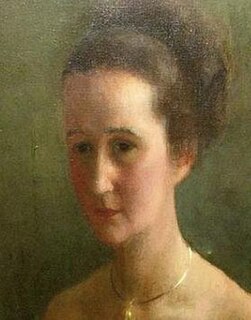Related Research Articles
Antony Price is an English fashion designer best known for evening wear and suits, and for being as much an "image-maker" as a designer. He has collaborated with a number of high-profile musicians, including David Bowie, Robert Palmer, Iva Davies, Steve Strange, and Duran Duran, but especially Bryan Ferry and Roxy Music, whose look was defined by Price's designs. The manner in which Price dressed – or in many cases, undressed – the "Roxy girls" on the covers of their albums helped to define the band's pop retro-futurism.
Topshop is a British multinational fashion retailer of women's clothing, shoes, make-up and accessories. It had around 510 shops worldwide – of which some 300 were in the UK – plus online operations in several markets. It was part of the Arcadia Group, controlled by Sir Philip Green, but went into administration in late 2020. The Topshop brand was purchased by ASOS on 1 February 2021.
Alfred Radley was a British clothing manufacturer best known for founding Radley Fashions and his association with the Quorum Boutique and fashion designer, Ossie Clark.
Shiatzy Chen is a Taiwanese luxury fashion house, founded in 1978 by Wang Chen Tsai-Hsia (王陳彩霞), who is often referred to as the Chanel of Taiwan. They describe their style as "neo-Chinese chic", where the aesthetics of Chinese clothing and handicraft are combined with Western styles, using design features drawn from Chinese culture such as mandarin collars and Chinese patterns. In 2010 Forbes magazine ranked Wang as one of the 25 most influential Chinese in global fashion.

E. Tautz & Sons is a men's clothing brand founded on Oxford Street, London in 1867 as Edward Tautz & Sons. It specialised in sportswear and trousers. The brand was acquired in 2005 by Patrick Grant and focuses on sportswear and casualwear, manufacturing many of its products in the United Kingdom.
Oscar Udeshi is a luxury menswear designer of Austrian and Zanzibar heritage.
Joseph is a luxurious fashion brand and retail chain that was established in London by Moroccan entrepreneur Joseph Ettedgui and his family in 1972.
Alice Pollock is a British fashion designer and retailer who founded the boutique Quorum, which featured the work of fellow designers Ossie Clark and Celia Birtwell, and later started the male modelling agency English Boy in London.
Sheridan Barnett is a British former fashion designer who worked with London boutique Quorum and launched the brand Barnett and Brown with Sheilagh Brown during the late 1970s. He went on to combine own-brand design with freelance work for names such as Jaeger, Norman Hartnell and Reldan, also working as a university academic. Barnett won Bath Museum of Costume's Dress of the Year award in 1983.
Clive Evans, better known as Clive, was a London-born fashion designer of the 1960s who attracted a number of celebrity fans and was promoted internationally as a high fashion designer from Swinging London.
Christopher McDonnell is a British fashion designer who operated in the UK between the 1960s and 1980s. In the US, he was known under his own name, and in the UK he operated under the brand name Marrian-McDonnell before switching to an eponymous label in 1973.

Prudence Glynn, Baroness Windlesham (1935–1986) was a British fashion journalist and author, best known for her long-running role as the first fashion editor of The Times.
Workers for Freedom was a British fashion label that was launched in 1985 by Graham Fraser and Richard Nott. The brand was awarded Designer of the Year in 1989 at the British Fashion Awards.
Moya Bowler is an English shoe designer who rose to prominence in the 1960s. She had considerable success in both the UK and US fashion markets, designing both high-end and high-street shoes.
Sheilagh Brown is a British fashion designer who began her career in the 1960s, as part of the Swinging London scene. She was among the designers for Stirling Cooper, working subsequently at Coopers and Quorum, before establishing the label Barnett and Brown with Sheridan Barnett.
Jeffrey Rogers established his eponymous company in the 1970s in Margaret Street, Soho, with a staff of three. Over time, his company grew to become a large international concern; by 1988 it had a turnover of £25 million and exported 15 per cent of production outside the UK.

John Flett was a British fashion designer who achieved early success with his own brand before designing briefly for Claude Montana. He died of a heart attack at the age of 27, while working in Florence.
The Chelsea Cobbler is a British shoe brand that was established in the 1960s in Chelsea.
The Row was established in 2006 by Ashley Olsen and Mary-Kate Olsen.
JW Anderson is a British fashion label, founded by Jonathan Anderson. Anderson lived in Northern Ireland during his youth before establishing JW Anderson in 2008 and subsequently launched his fashion house in London. The brand initially focused on menswear, before moving into womenswear in 2010. From 2012 onwards, the brand and its designer have collaborated with a number of retail fashion brands, most notably Topshop and Versace with LVMH acquiring a minority stake in the brand in 2013.
References
- 1 2 Glynn, Prudence (5 March 1968). "Long skirts at short prices". The Times (57192).
- 1 2 3 King-Deacon, Antony (31 October 1969). "The Price of where it's at". The Times (57705).
- 1 2 Glynn, Prudence (7 October 1969). "Doing your own thing". The Times (57684).
- ↑ "Antony Price". showstudio.com. Retrieved 21 October 2014.
- ↑ Webb, Iain R. "The Man who Styled the Seventies". shortlist.com. Retrieved 21 October 2014.
- ↑ O'Byrne, Robert (2009). Style City: How London Became a Fashion Capital. London: Francis Lincoln. p. 13. ISBN 9780711228955.
- ↑ Glynn, Prudence (11 August 1970). "Think Small". The Times (57941).
- 1 2 Brown, Sheilagh (2014). "Sheilagh Brown and Sheridan Barnett". Very Magazine. Retrieved 21 October 2014.
- ↑ Glynn, Prudence (1 September 1970). "Mastering the Midi". The Times (57959).
- ↑ Glynn, Prudence (15 October 1974). "Fashion". The Times (59218).
- 1 2 Glynn, Prudence (18 April 1972). "Trend Setters". The Times (58455).
- ↑ Neustatter, Angela (14 January 1975). "Four Score". The Guardian.
- ↑ Glynn, Prudence (20 May 1976). "Ten Years of Counting Ourselves Lucky". The Times (59709).
- ↑ Stone, Margaret (29 June 1978). "All Weather Clothes of All Work". The Times (60340).
- ↑ Greenberg, Susannah (4 December 1986). "I'll be with you in a Jiffi". The Guardian.
- ↑ Leinster, Colin; Goodman, Ann (24 November 1986). "The Rubber Barons". Fortune. Retrieved 21 October 2014.
- ↑ Webb, Iain R. (8 February 1995). "Designer lines on the high street". The Times (65185).
- ↑ "STIRLING COOPER – davidquigleyarchitects.co.uk" . Retrieved 20 November 2015.
- ↑ Field, Marcus. "A Street Culture Theme" (PDF). davidquigleyarchitects. The Architects' Journal. Retrieved 21 October 2014.
Molly Parkin , Michael Roberts, Sunday Times August 6, 1972
Featuring clothes and editorial on the Cooper brand launch